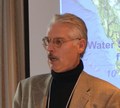FLASHBACK TO 2011: “Rainwater Management in a Watershed Context – What’s the Goal?” published as the conclusion to a green infrastructure series by Stormwater Magazine

“This article makes important comparisons between stormwater management in the US and Canada. Although both are moving toward greater use of green infrastructure, the differences in approach are significant…. and practitioners in the US can learn a great deal from BC’s approach,” stated Janice Kaspersen.










